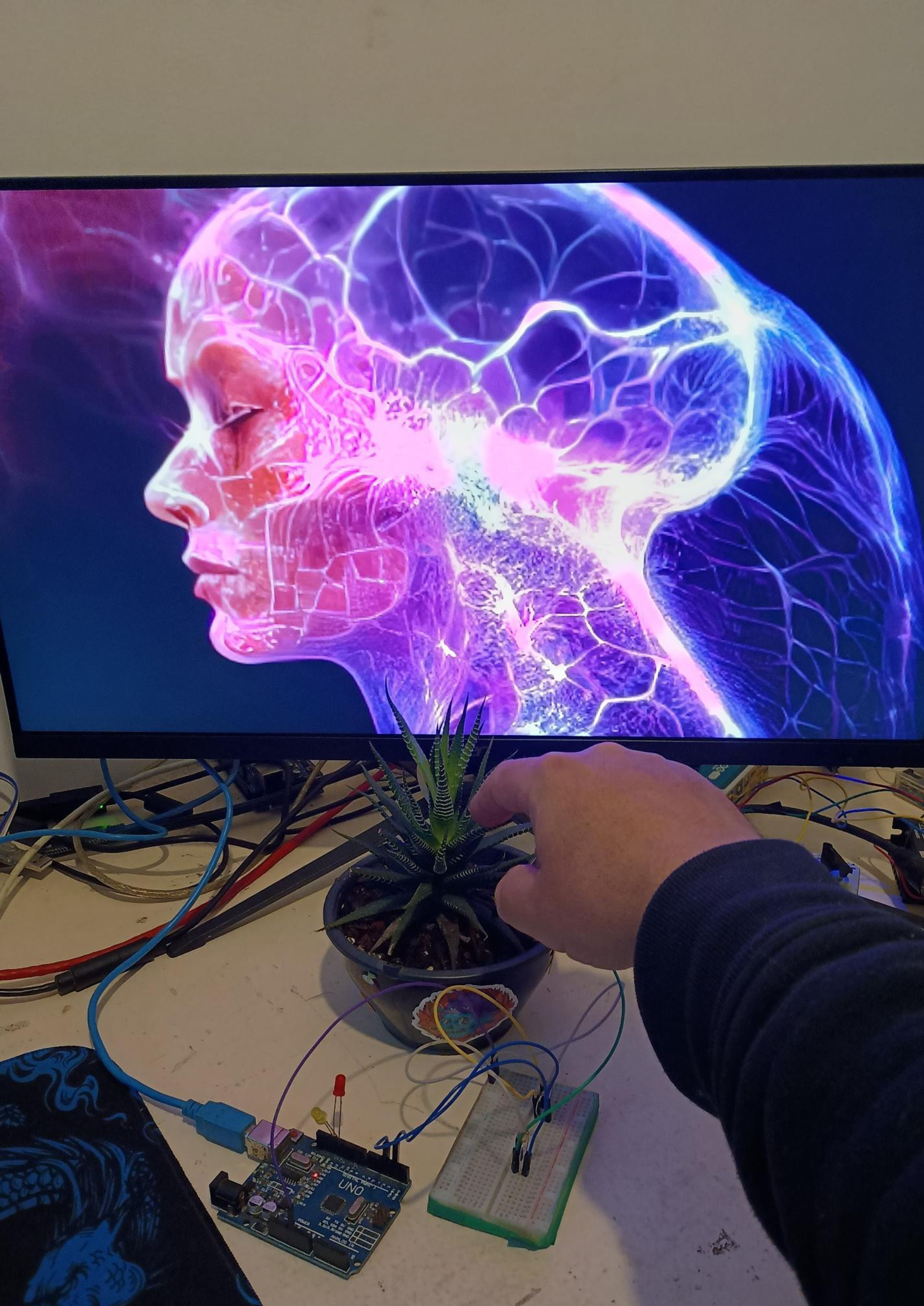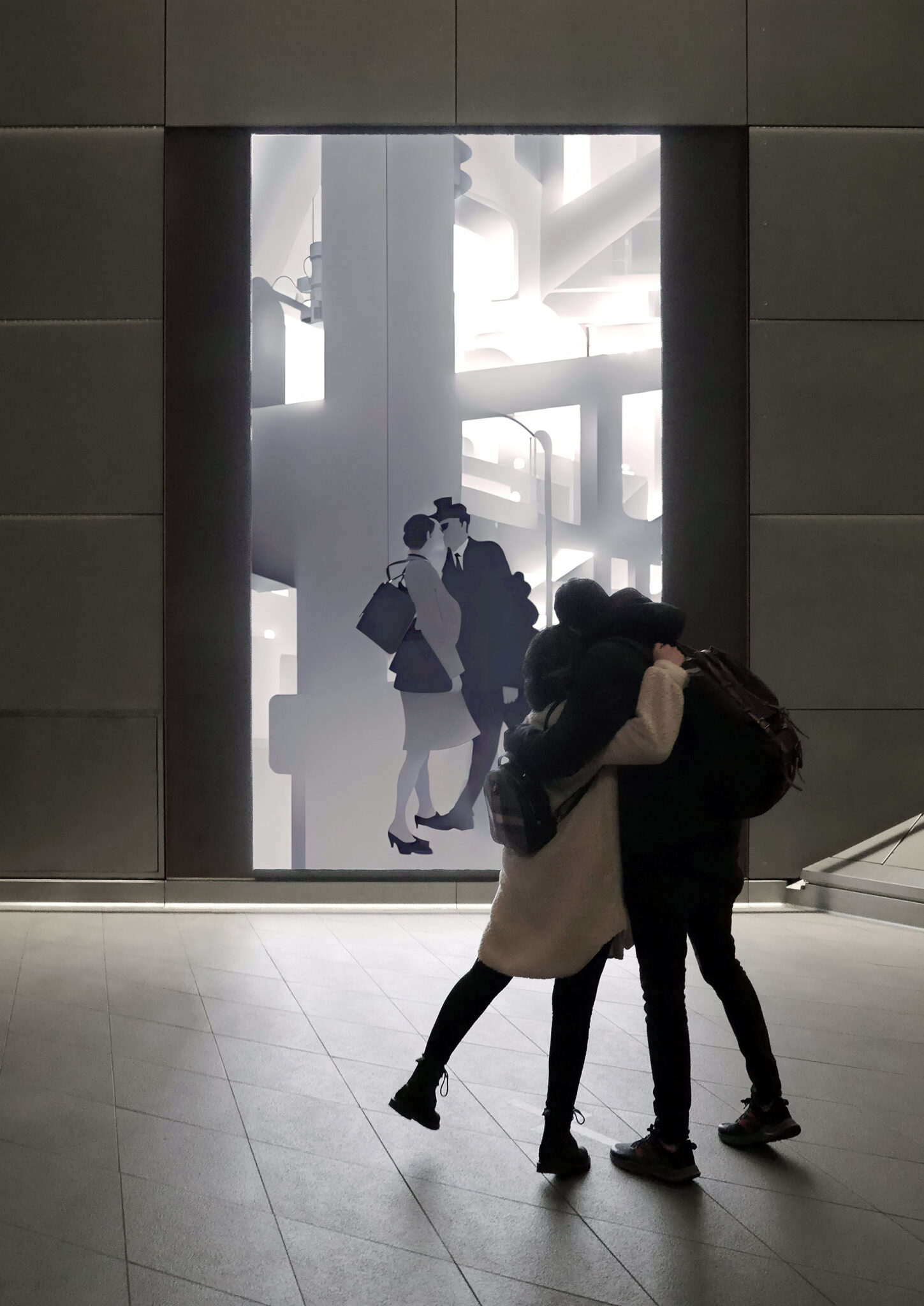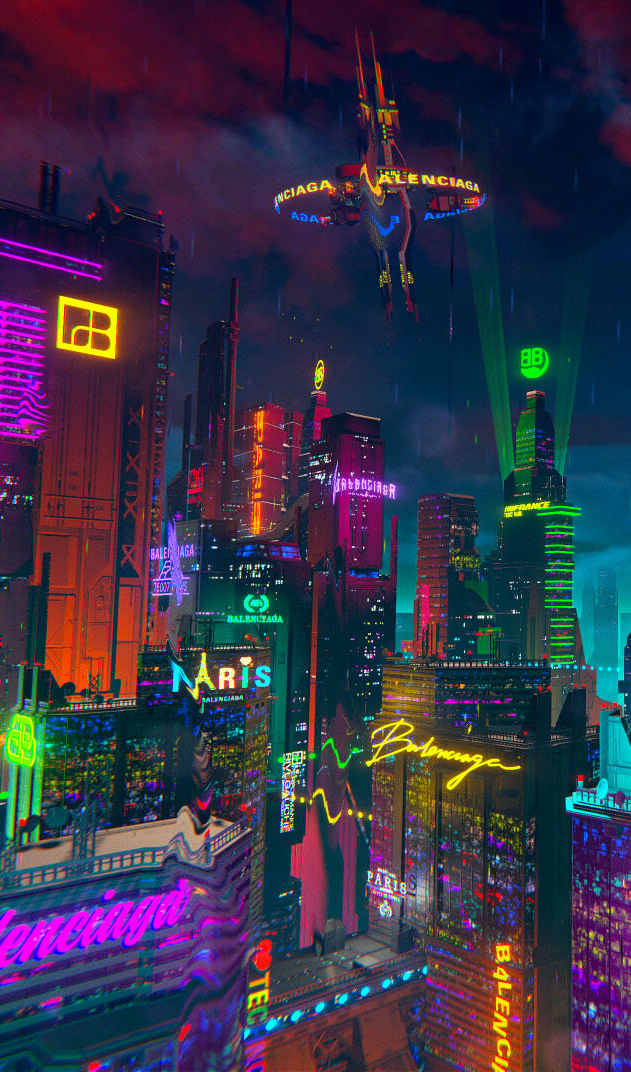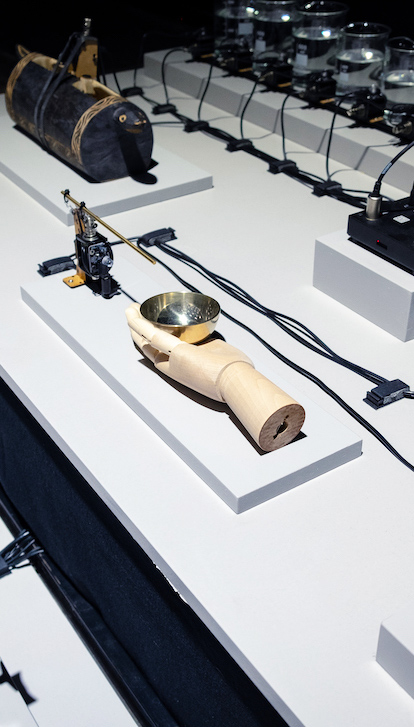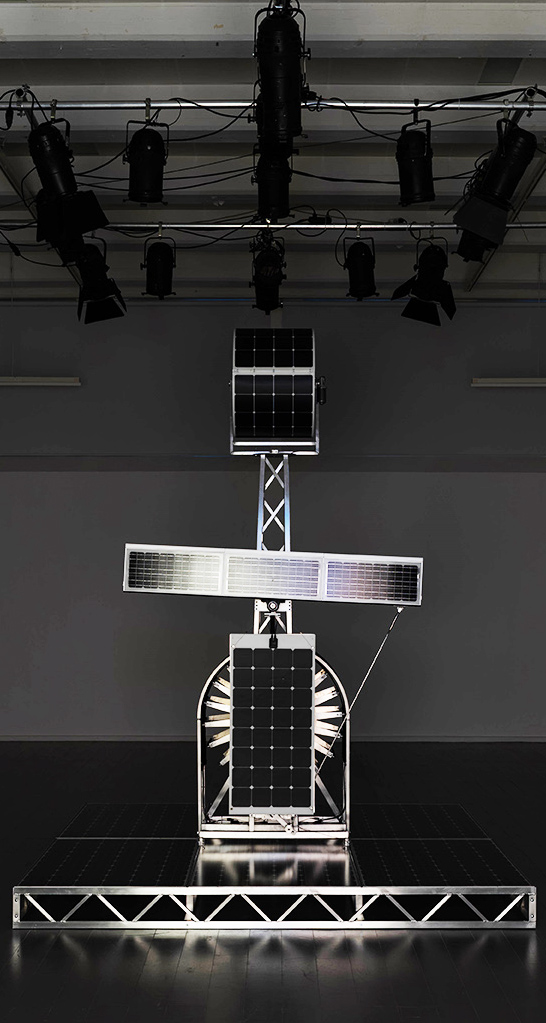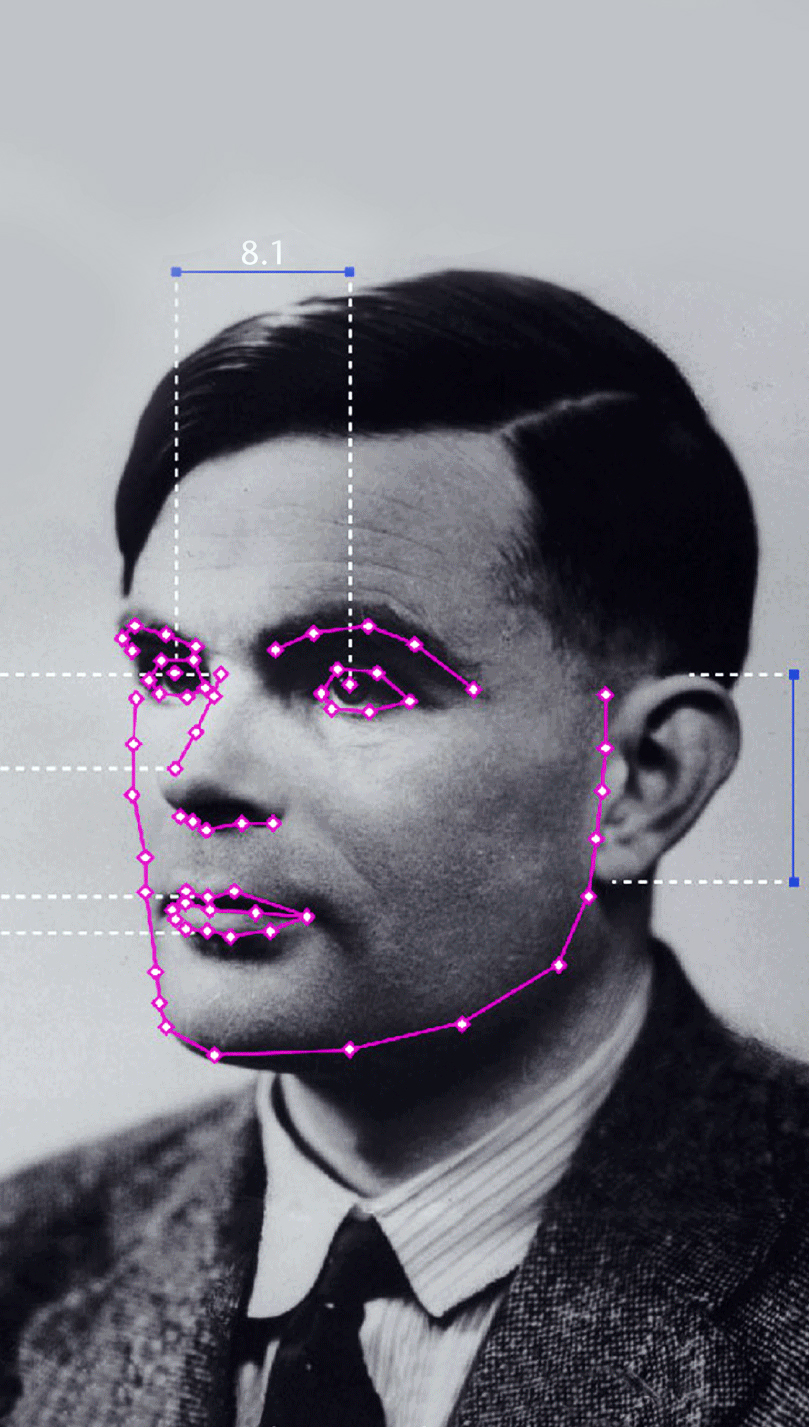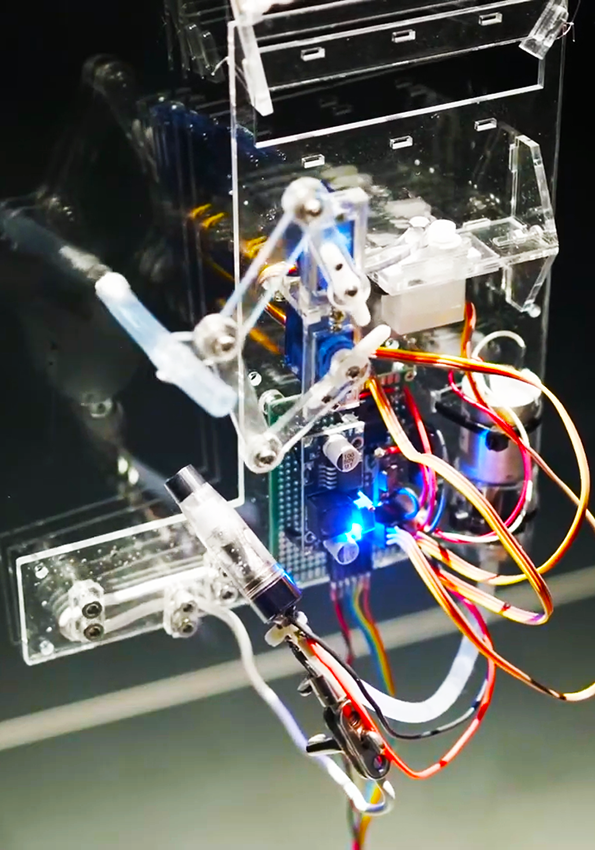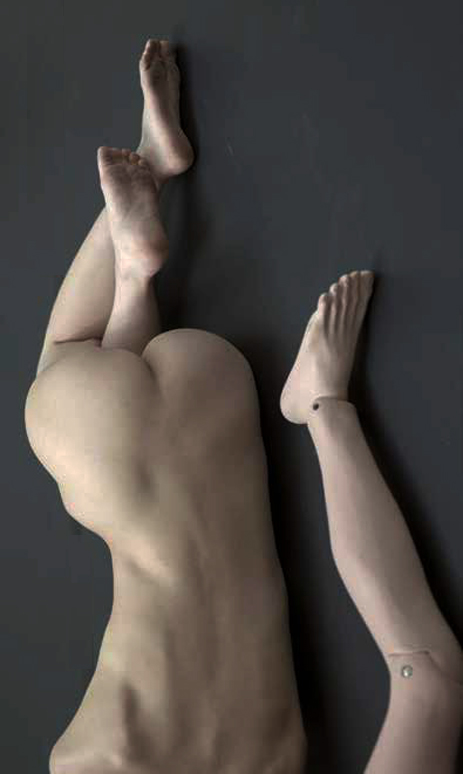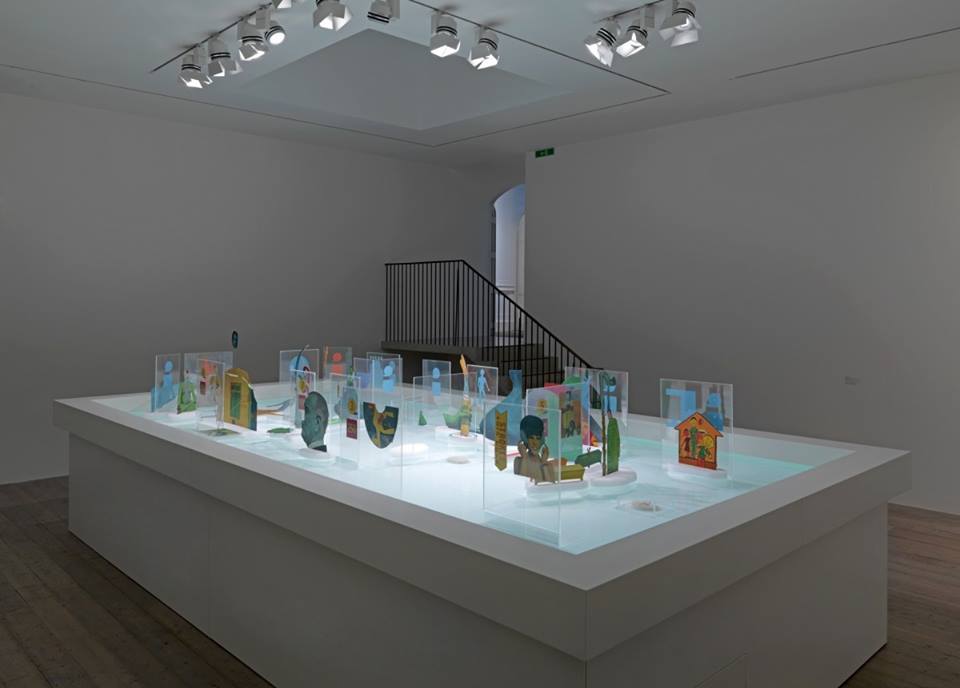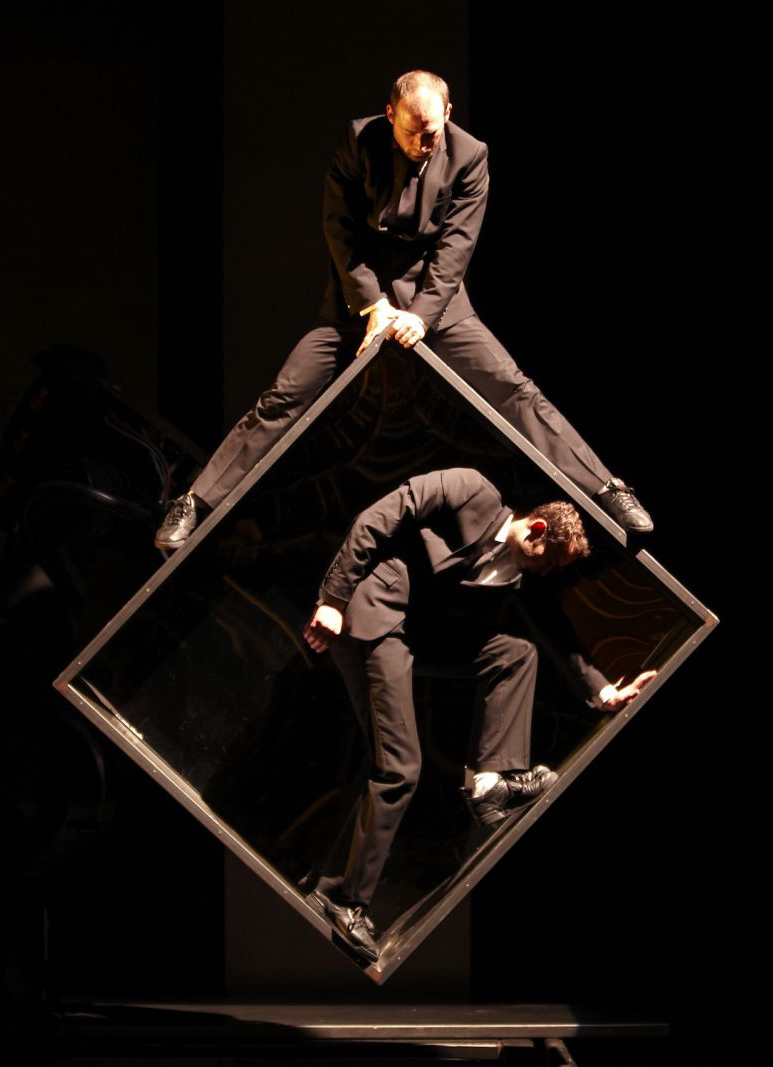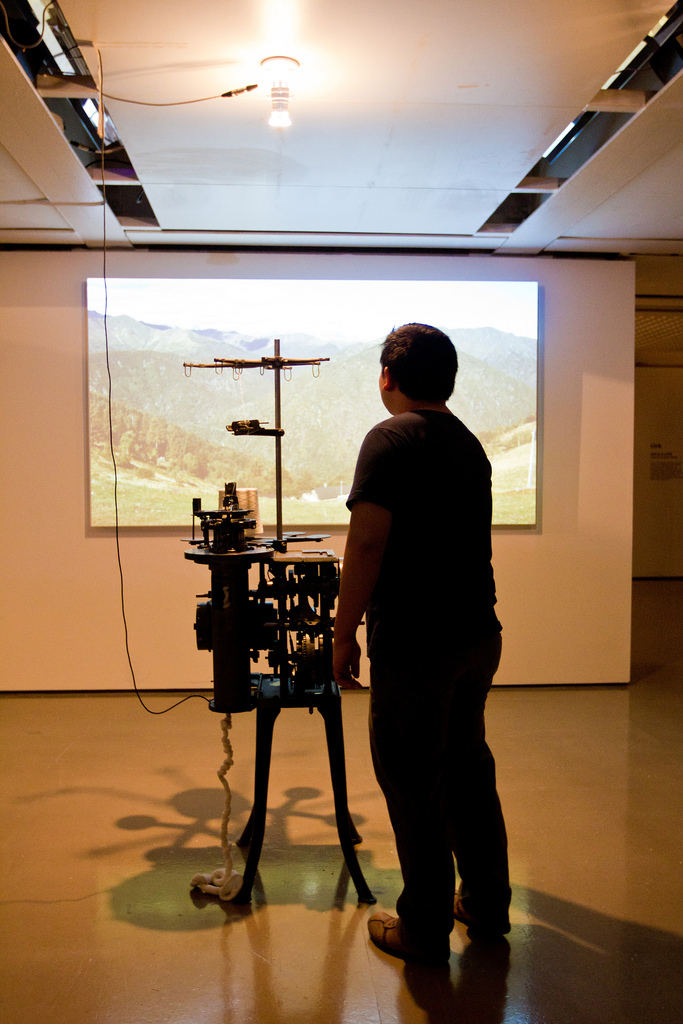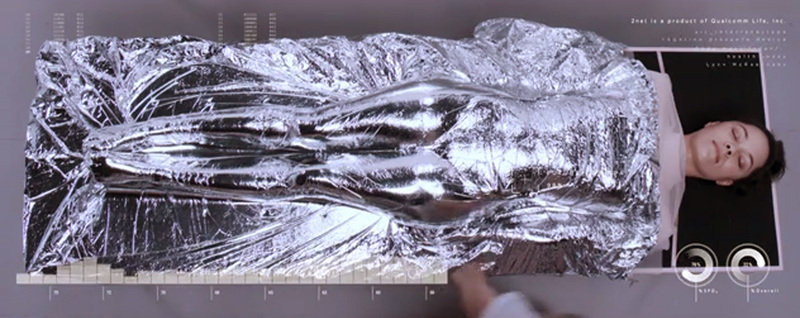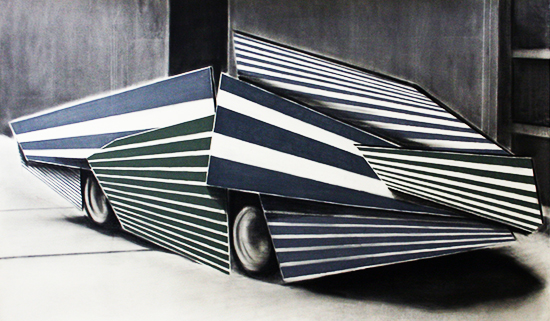
Coralie Vogelaar
infinite posture dataset
She moves by endlessly morphing to the rhythm of the device – strapped in the frame of the screen – following or giving instructions; part human, part machine. The design of the device is inspired by a gadget to cheat the step-counter on your smartphone. Technology tricked by technology. Her movements, caught within a motion capture like tight suit deconstructing her body parts, talk of complex and conflicting emotions, but her face, from which we usually read how someone is feeling, is hidden. But is the machine that is observing her deconstructed and re-sequenced postures actually capable of recognizing what the body is communicating? Are we?

